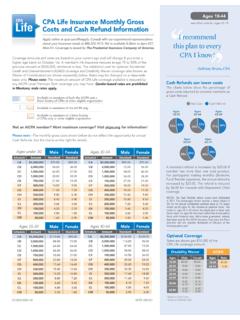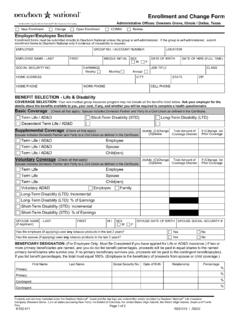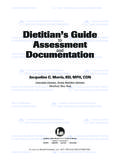Transcription of Mechanical Lifts in Schools - caduceushandouts.com
1 11/21/20161 Mechanical Lifts in SchoolsKaren Greeley, Lori Bartleson, Adrianne MoffittFebruary 17, 2017 Who? When? Why? What? Where?The presenters have no affiliation with any of the products or manufacturers discussed in this presentation, nor any other conflict of Identify the complex factors that must be considered when creating a student specific safe lift vs. transfer Choose a lifting device depending on student, environmental, and staff Build an evidenced-based case to support the lifting decisions and overcome Embed a therapeutic lifting/transfer plan into a student s IEP to maximize safety and independence throughout the is this Important?
2 Work related MS disorders are the leading occupational health problem plaguing the nursing data available in the school setting. According to the US Department of Labor (2002), compared to other occupations, nursing aids/orderlies/attendants rank 2nd in at risk occupations. Nurses rank 6th. NIOSH (National Institute for Occupational Safety and Health) has identified back injury as the second leading occupational injury in the US and the most common reason for filing workman s compensation for Support Staff? Lost work days Burn out Decreased retention/ high turnover Threatened recruitment Training time commitment What is Currently Available?
3 In the US, there is no national legislation in the area of lifting. In November 2000, OSHA issued a final ergonomics rule to protect healthcare workers. This was overturned in 2001 as it was thought to be costly and an unnecessary burden to industry. In 2004, OSHA published an industry related guideline guideline guideline guideline for nursing home with Care, ANA (American Nurse s Association) National campaign established in 2003 Supports a No Lift PolicyHandle With Care: No Lift Policy No lifting except in life threatening situations Patients should be encouraged to assist in their own transfers Proper infrastructure: Management commitment Equipment Maintenance of equipment Employee training A culture of safety.
4 NIOSH Lifting Recommendations Recommend that the average worker lift no more than 51 lbs. Based on ideal conditions of lifting a stable box from the ground to waist height. When lifting people, NIOSH recommends using either an equation with multipliers for additional variables OR a 35 lbs. weight Lifting EquationRWL= LC x HM x VM x DM x AM x FM x CMRWL=Recommended weight limitLC= Load constant (51 lbs.)HM= Horizontal multiplierVM= Vertical multiplierDM= Distance multiplierAM= Asymmetric multiplierFM= Frequency MultiplierCM=Coupling MultiplierOSHA Lifting Recommendations Patient care ergonomic assessment protocols Patient Lift Teams Although these guidelines are designed specifically for nursing homes, OSHA hopes that employers with similar work environments, such as assisted living centers, homes for the disabled, homes for the aged, and hospitals will find this information useful.
5 , 200511/21/20163 Haglund, 2009 Program implemented in children s hospital in response to state law and staff survey To determine understanding of safe patient handling and frequency of lifting tasks Pre/post prospective study Purchased Lifts , slings, repositioning sheets Minimal lift policy Lift/transfer algorithm developed for transfers Implemented Ergo Coaches to act as peer leadersHaglund, 2009 Before ProgramAfter ProgramAverage # incidents per year144 Lost work days129 Workers Compensation costs$17, - $ 35, $4, - $ 99, reduction in incidences of injuriesCampo, 2008 Rates of injury among PT s Members of the APTA (n=887) completed questionnaire in 2005 and 2006 reported work related aches, pain, discomfort in 678 body regions Impacts: Need to consult physician (n=115) Change work setting (n=18) Leave profession (n=11) Loss of time at work (n=62)Lifting Policies in 11 states (California, Illinois, Maryland, Minnesota, Missouri, New Jersey, New York, Ohio, Rhode Island, Texas, Washington, & Hawaii).
6 But nothing for Schools 10 states have comprehensive programs for their health care facilities ( hospitals & nursing homes). Hawaii: resolution to support SPH policies of the ANA Only true emergencies warrant the use of manual lifting a patient. Several states offer grants or funding to assist with following their SPH including purchasing of equipment and training of about public Schools ?Approaches from 4 different states /school districtsVA:Fairfax County Public SchoolsMD:Maryland State Steering Committee for OT and PT School-based ProgramsSC:Dorchester School District IIOR: High Desert Education Service District11/21/20164 Fairfax County Public Schools , VirginiaVirginia Department of Education Handbook for PT and OT.
7 Outlines school based practice and roles of OT s and PT s but does not delineate any lifting guidelines FCPS guidelines are based on the NIOSH safe lifting FCPS Therapy Services department (OT and PT) provides all equipment Therapy Services department is a centrally located department funded by the department of special services (special education) with it s own budget for equipment Collaborative initiative to have safe and effective personal care spaces in all buildings Incentive to attend lifting trainingsFCPS Safe Patient Handling Survey October 2009 Purpose: to determine training needs, use of equipment and barriersHow comfortable do you feel training others?
8 Not comfortable at all (%)Somewhat comfortable (%)Comfortable (%)Extremely comfortable (%)In performing the use of lifting school staff do not use lifting equipmentYes (%)No (%)Space547 Interface between equipment3862 Storage3664 Time to use4258 Time to locate/get2575 Not enough slings0100 Availability5743 Staff resistance5743 Decision making tree for transferring students with disabilitiesMaryland-MD State Steering Committee for MD State Steering Committee for MD State Steering Committee for MD State Steering Committee for OT and PT SchoolOT and PT SchoolOT and PT SchoolOT and PT School----based Programsbased Programsbased Programsbased ProgramsA forum for OT/PT school-based and early intervention specialists and other stakeholders to meet and problem-solve regarding statewide issues in the
9 Assessment and implementation of OT/PT services in Maryland public Schools and early intervention PartnershipWhat have we done? Developed a Guide to Practice for: Administrators and OT and PT Practitioners in Early Intervention and Schools in the state of Maryland. Created a Lifting and Transferring Guideline based on current evidence and best School District II, South Carolina Situational:Teacher injured from lifting students in a high school severe class> long term disability and workmen s comp>teacher was unable to return to work>class was then without certified teacher. The district wanted to avoid this happening again>school-PT School District II, South Carolina Targeted Programsfirst: high school ID severe>high school ID mod>middle school ID severe all with overhead track Lifts now Targeted students: hoyer lift, Tram However, once a lift is in place will school staff utilize it and will the students continue to assist with transfers?
10 No state or district guidelines yet in Desert Education Service District, Oregon Serves 8 districts as a regional entity All special education directors & PTs in the districts agreed: no 2-person Lifts use of transfer equipment if a child is > 30 lbs standing pivot transfers only when they can be done reliably, cooperatively, and easily High Desert Education Service District, Oregon Partner with administration Perform environmental assessments Prioritize high risk classes Consider district budget/budget cycle Provide targeted employee training Partner with vendors & schedule demo trials Early involvement with new buildings and remodels Integrate into the IEP/504 planSo, What about Public Schools ?




